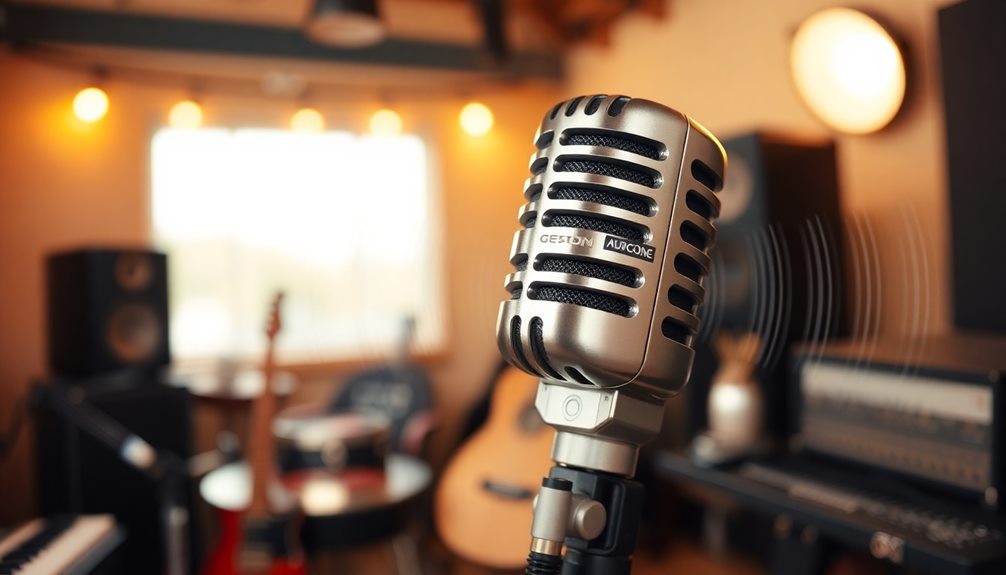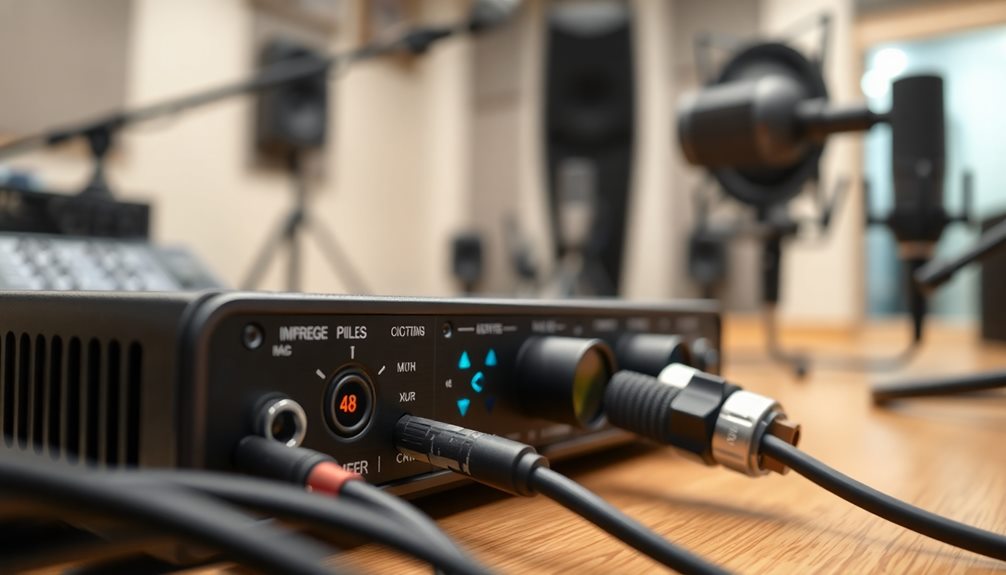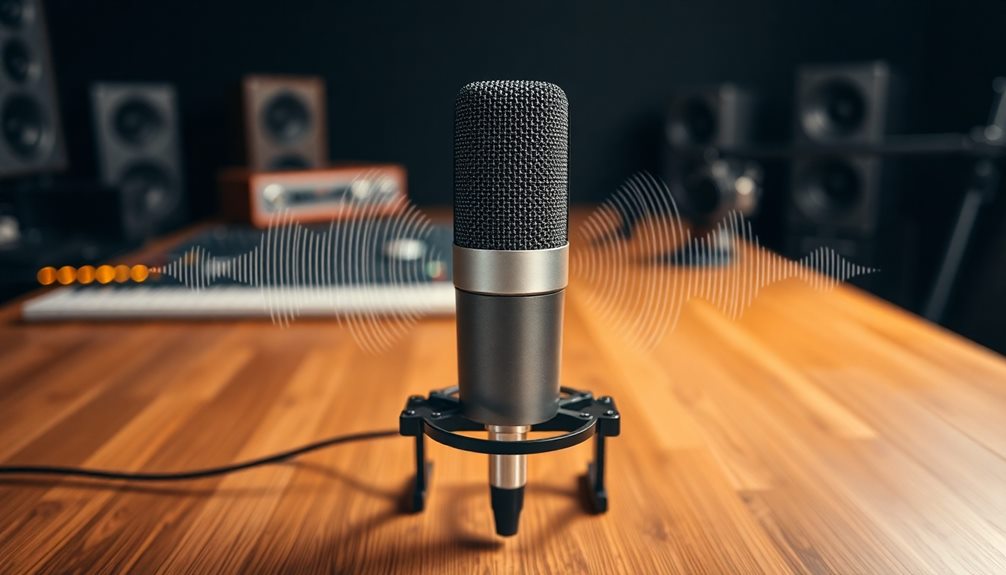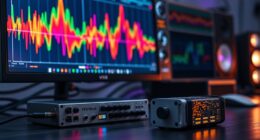An omnidirectional microphone is a fantastic tool that picks up sound from all around it! This means it captures every little noise and is great for recording things like live concerts or the sounds of nature. Since these mics don't focus only on one direction, they create a natural, rich sound. However, they may not do so well in noisy places, as they pick up everything around. If you want to record choirs or ambient sounds, they're perfect! To learn how to choose the best one for your needs, keep exploring the exciting world of microphones!
Key Takeaways
- Omnidirectional microphones capture sound equally from all directions, making them ideal for ambient recordings and wide sound sources like choirs and orchestras.
- They excel in acoustically friendly environments, providing natural, rich sound quality while minimizing tonal changes from distance.
- These microphones have low background noise rejection, making them less suitable for noisy environments or situations with multiple sound sources.
- The proximity effect is minimal, resulting in consistent tonal quality regardless of the microphone's distance from the sound source.
- Placement and angle adjustments significantly influence sound capture quality, helping to avoid unwanted ambient noise and enhancing clarity.
Understanding Microphone Directionality
Understanding microphone directionality is key to achieving high-quality recordings. This term describes how sensitive a microphone is to sounds coming from different angles.
You'll find two main types: omnidirectional and unidirectional microphones. Omnidirectional microphones capture sound equally from all directions. They're perfect for recording natural and ambient sounds in spaces with good acoustics.
On the other hand, unidirectional microphones, like cardioid types, focus on sound coming from directly in front. This means they're great for isolating the sound you want while blocking out background noise.
The polar pattern helps illustrate these sensitivities. Omnidirectional mics have a circular pattern, while unidirectional mics show a heart shape.
Characteristics of Omnidirectional Microphones
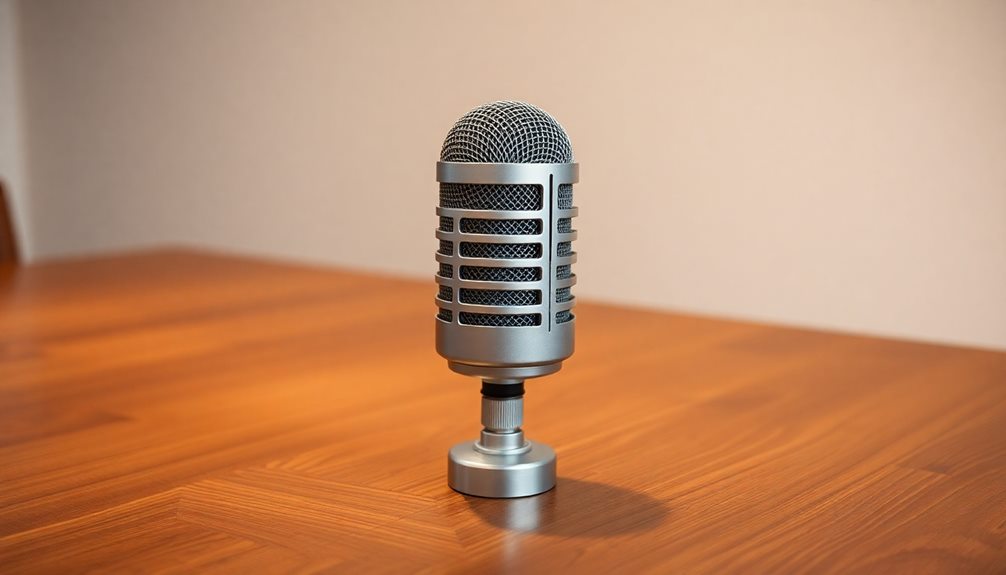
Omnidirectional microphones are designed to pick up sound equally from every direction, making them a versatile choice for various recording situations. These microphones have a unique ability to capture ambient sound, which is perfect for recording environments like live concerts or nature scenes.
They're great for wide sound sources, such as choirs or orchestras, where you want to hear every voice and instrument clearly.
One cool thing about omnidirectional mics is their frequency response. They perform well in acoustically friendly spaces, providing a natural sound without much coloration. You'll notice that smaller diaphragms can enhance their high-frequency response, giving you bright and clear audio.
However, keep in mind that these microphones mightn't be the best for rejecting background noise. If you're in a loud area, other mics might be better.
Additionally, omnidirectional microphones show less proximity effect, which means the tonal balance remains consistent, no matter how close or far you're from the sound sources. This feature makes them even more delightful to use, ensuring your recordings sound great!
Advantages and Disadvantages
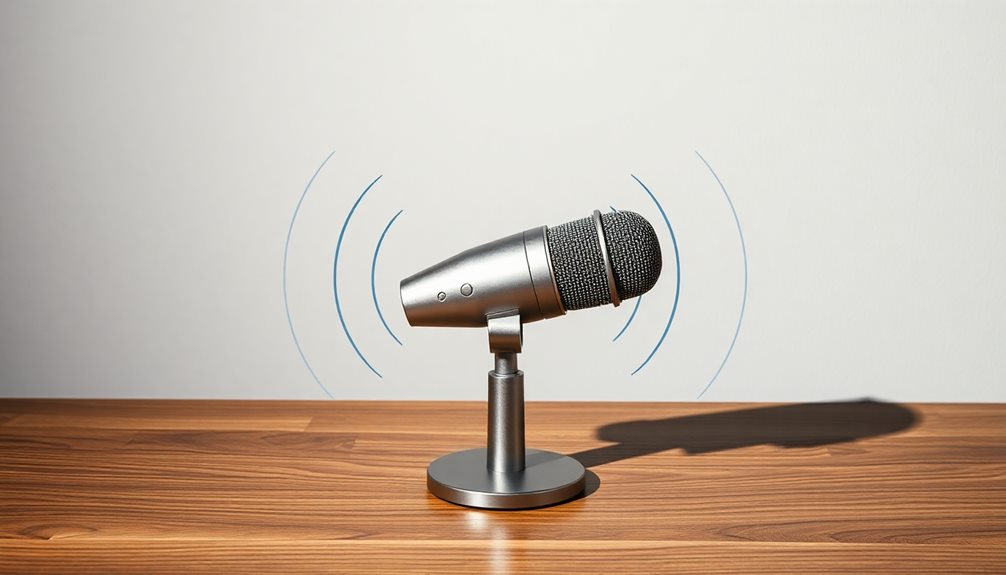
When considering the advantages and disadvantages of omnidirectional microphones, it's clear they offer unique benefits alongside some limitations.
These microphones capture sound equally from all directions, making them perfect for recording natural sound and wide sound sources like choirs or orchestras. You'll love how they excel in studio environments with good acoustics, providing a true and honest representation of the audio.
However, there are some drawbacks. Omnidirectional mics lack background noise rejection, which makes them less suitable for high-noise environments or live performances where sound isolation is key.
You might notice that the proximity effect, which enhances low-frequency response, is less pronounced in these mics compared to unidirectional types.
While omnidirectional mics can shine in sonic qualities and handle noise better in specific scenarios, they may lead to sound leakage in multi-source setups. This can compromise clarity in your recordings.
Comparison With Unidirectional Microphones
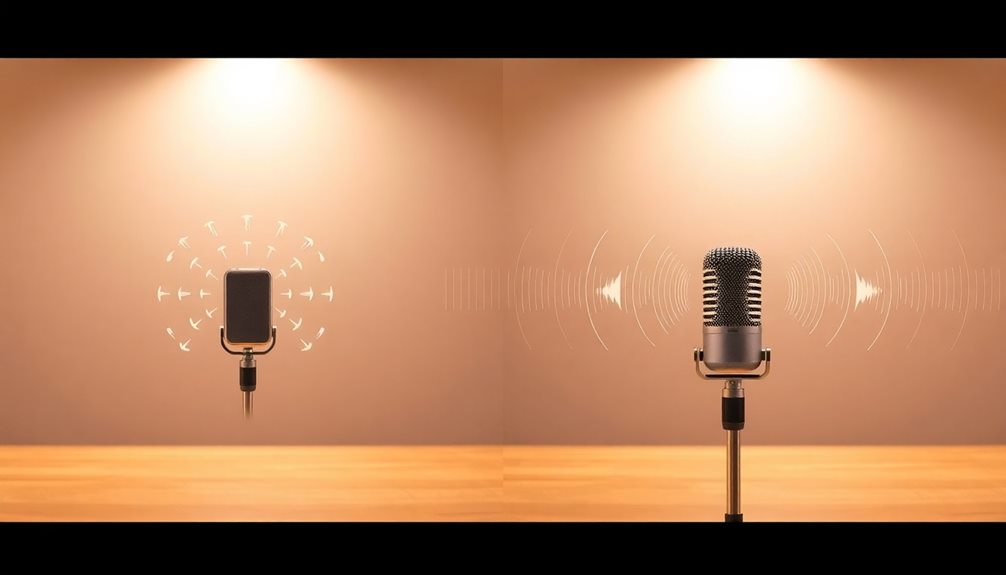
Capturing sound effectively requires choosing the right microphone type, and comparing omnidirectional microphones with unidirectional ones highlights their distinct characteristics. Omnidirectional mics capture sound equally from all directions, making them great for natural sound recordings. However, they can suffer from sound leakage in multi-mic setups. Unidirectional microphones, like cardioid models, focus on sound from the front, which means they do a great job of noise suppression. This makes them perfect for live performances and noisy spaces.
Here's a quick comparison:
| Feature | Omnidirectional | Unidirectional |
|---|---|---|
| Pickup Pattern | All directions | Front-focused (cardioid) |
| Noise Suppression | Low | High |
| Signal-to-Noise Ratio | Lower in noise | Higher in noisy environments |
| Close-Miking Effect | No proximity effect | Emphasizes bass response |
Placement and Frequency Considerations
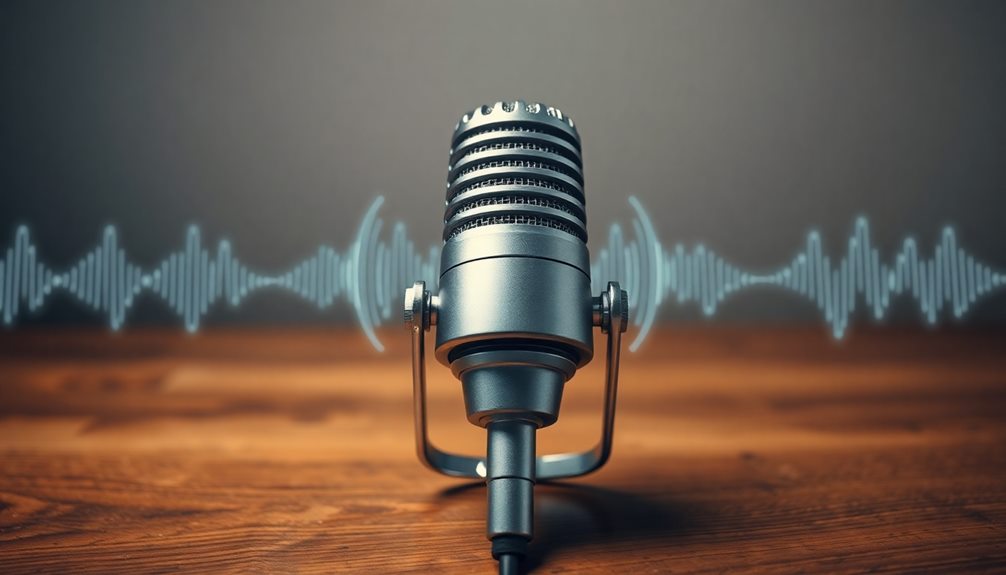
When you use an omnidirectional microphone, where you place it can really change the sound you capture!
The proximity effect means that getting the mic closer to your sound source can boost those rich bass tones, making everything sound fuller.
Plus, adjusting the angle and distance helps you avoid unwanted noise and get the best audio quality possible—so let's explore how to make the most of your mic placement!
Proximity Effect Implications
Proper placement of omnidirectional microphones greatly influences the sound quality you capture, particularly concerning the proximity effect. When you place the microphone close to the sound source, you can enhance the low-frequency response, giving your recordings a warm, rich sound. This is the magic of the proximity effect!
However, be careful. If you place the mic too close, the bass might become overwhelming, overpowering other frequencies.
On the flip side, if you position the microphone too far from the sound source, you may find that it picks up more ambient noise. This can muddy your recordings and affect the clarity of the desired sound. It's all about balance!
Experimenting with distance is key. Try moving the microphone around to find that sweet spot where you get the best sound without losing detail.
Remember, at higher frequencies, omnidirectional mics can act a bit differently, so always check how your placement impacts the overall performance.
With a little practice and testing, you'll find the perfect placement to capture the beautiful sounds you want! Enjoy the journey of discovering the best way to use your omnidirectional microphone!
Angle and Distance Adjustments
Finding the right angle and distance for your omnidirectional microphone isn't just about how close you're to the sound source; it also involves how you orient the mic. Adjusting the angle can really change the tonal quality of your recordings! If you tilt the microphone, it can capture different sounds in the room, including reflections.
When you place your mic, think about the distance from the sound source. Getting too close can boost bass, thanks to the proximity effect, but you might lose clarity. So, finding that sweet spot is key!
Also, consider the height of your microphone. Placing it higher or lower can help minimize unwanted reflections, letting you focus on the direct sound. Don't forget that omnidirectional mics might act a bit directional at higher frequencies.
Experimenting with placements and angles is super important! Each adjustment can change the balance between direct and indirect sounds, which affects overall recording quality.
Sound Quality and Leakage
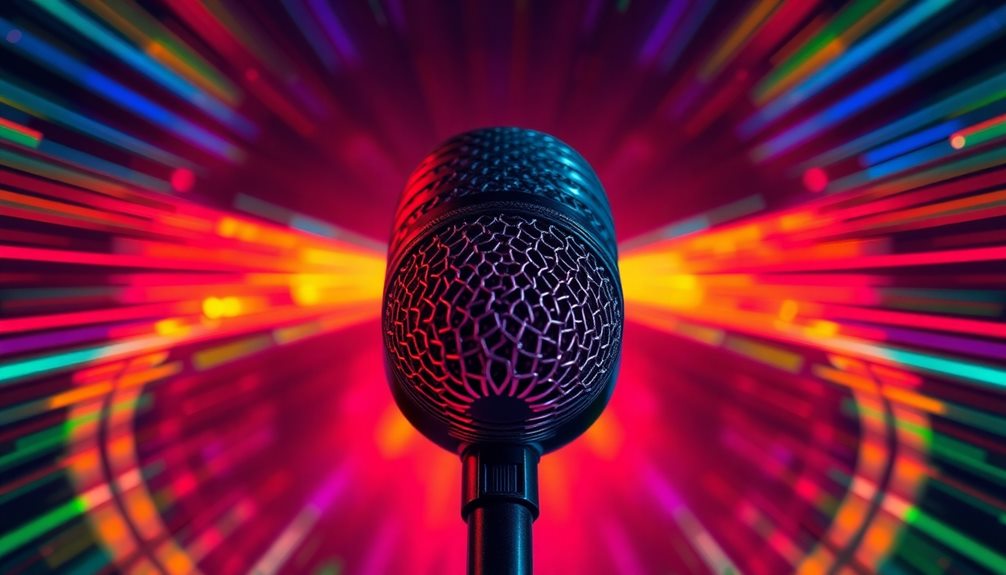
Omnidirectional microphones are known for their ability to capture sound from all directions, which greatly influences their sound quality and potential for leakage. You'll find that these mics create a natural and rich sound, especially in acoustically pleasant spaces. They excel at picking up ambient sounds, making them perfect for recordings like choirs or live performances. However, they can also introduce some challenges.
Here are a few key points to keep in mind:
- They capture sound sources equally, providing an honest representation.
- Clarity is enhanced when positioned closer to the sound source.
- Leakage can be beneficial, adding space and air to your recordings.
- They might struggle in noisy environments with multiple sound sources.
- In well-acousticed areas, they can outperform unidirectional microphones.
While sound leakage may seem like a drawback, it can actually enhance your recordings by blending sounds together beautifully.
With omnidirectional mics, you get a chance to enjoy an open and engaging sound that feels alive. So, if you're looking for a microphone that captures the essence of a performance, this could be the one for you!
SPL Handling and Performance
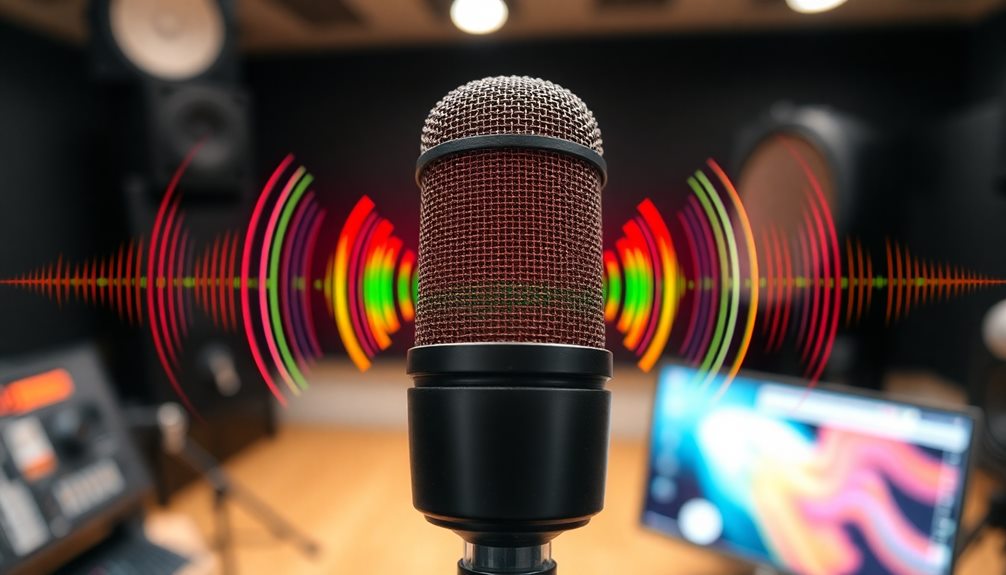
When you're working with omnidirectional microphones, understanding their SPL handling and performance is essential to maximizing their potential. These microphones can be placed anywhere, capturing sound from all directions.
They're great for high SPLs in close proximity but remember, they can be less sensitive to quieter sounds. This means they might struggle with handling noise from loud sources if you're not careful.
When you use them, the proximity effect kicks in, enhancing lower frequencies. This can give you a richer sound, but it can also lead to distortion if you're too close.
In live sound situations, feedback can occur, especially because omnidirectional mics usually have a lower gain-to-feedback ratio.
Fortunately, many omnidirectional microphones are built to minimize distortion, ensuring clean sound capture even at high SPLs. Knowing the SPL handling capabilities of your mic is vital.
It helps you avoid clipping or unwanted noise during recordings or performances. So, whether you're in a studio or on stage, understanding how these mics work will help you get the best sound possible!
Enjoy exploring the world of sound with your omnidirectional microphone!
Best Practices for Selection
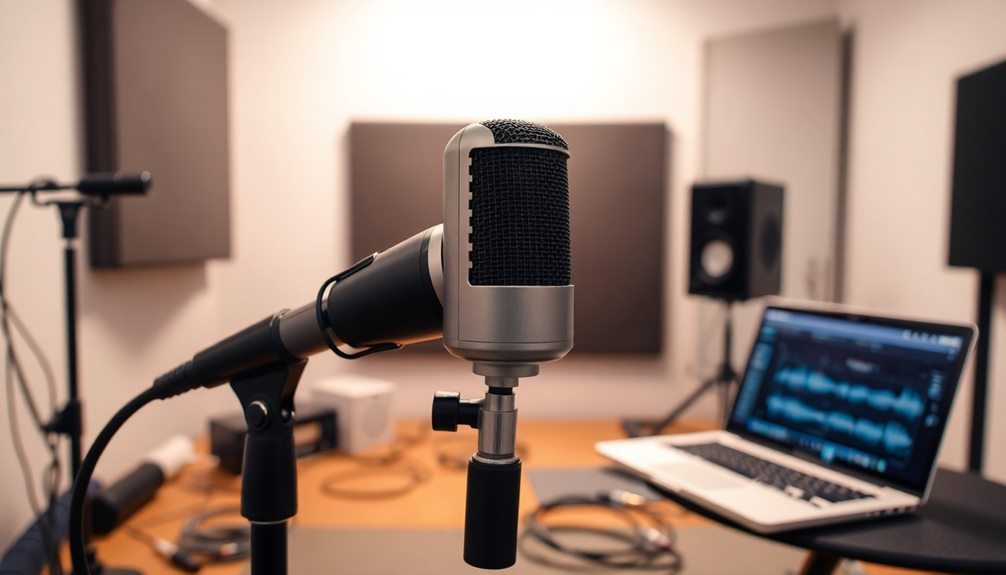
When you're picking an omnidirectional microphone, it's super important to think about where you'll be using it.
The right setting can make a big difference, especially if you want the best sound quality.
Plus, considering your budget and what you need the mic for will help you make the perfect choice!
Assess Acoustic Environment
To guarantee ideal sound capture with an omnidirectional microphone, it's crucial to assess the acoustic environment where you'll be recording.
These microphones pick up sound from all directions, so understanding your space can help you get the best results.
Here are some best practices to keep in mind:
- Check background noise: Listen for sounds that might interfere with your recording. Omnidirectional mics aren't great at blocking out unwanted noise.
- Evaluate acoustics: A room with good acoustics enhances ambient sound quality, making recordings feel more natural.
- Consider mic placement: Place the microphone closer to the sound source to improve clarity and direct sound capture.
- Think about your needs: If you want to record wide sound sources, like choirs or nature, omnidirectional mics are perfect.
- Experiment with angles: Adjusting the microphone's position can change the tonal quality and overall sound.
Determine Usage Purpose
Understanding the acoustic environment sets the stage for determining the best purpose for your omnidirectional microphone. These mics work wonders in capturing sound equally from all around, making them perfect for recording wide sound sources like choirs or nature sounds. If you want to catch all those beautiful background noises, an Omni mic is your friend!
However, be careful where you use it. In noisy environments, unwanted noise can sneak in, making your recordings less clear. Omnidirectional mics pick up sounds from every direction, so they're not the best choice in places with lots of background noise. You'll want to avoid that if you're aiming for a clean sound.
One great feature is that the proximity effect in these mics is minimal. This means you can maintain a consistent tonal quality, no matter how far you're from your sound source.
Evaluate Budget Considerations
As you evaluate budget considerations for an omnidirectional microphone, it's crucial to strike a balance between quality and performance. Prices can vary widely, so setting a budget range helps you find the right mic for your needs.
Remember to take into account the total cost of ownership, which includes important accessories like:
- Windshields
- Stands
- Cables
- Pop filters
- Cases
Investing in a reputable brand can offer you reliability and better durability. You want your new microphone to last and sound great!
Look for features like frequency response and SPL handling that match your intended use. This way, you won't overspend on features you mightn't need.
Don't forget to check for sales or bundles that can provide extra savings. Retailers often have discounts for multiple purchases or during special promotions.
By carefully weighing these factors, you guarantee that your budget stretches to cover a quality microphone that performs well.
With a little research and planning, you'll find the perfect omnidirectional microphone to capture your sound beautifully!
Frequently Asked Questions
How Does an Omnidirectional Microphone Work?
An omnidirectional microphone works by using a diaphragm that responds to sound pressure from all directions. This design captures audio evenly, producing a natural sound, but it struggles with background noise in loud environments.
What Is Microphone Omni Directional Vs Directional?
Imagine a sound-catching net: omnidirectional mics gather audio from every angle, while directional mics focus like a spotlight. You'll choose based on your needs—embracing ambiance or isolating a clear, singular sound source.
What Is an Omnidirectional Mic Best For?
An omnidirectional mic's best for capturing sound from all around you. It's perfect for interviews, podcasts, and live performances, ensuring all voices and ambient sounds blend naturally for a rich, immersive audio experience.
What Is the Meaning of Omni Directional Headphones?
Omnidirectional headphones capture sound from all directions, providing you with an immersive audio experience. They're perfect for virtual reality and gaming, creating a realistic 360-degree sound field that enhances your overall listening enjoyment.
Conclusion
So, now you know all about omnidirectional microphones! They're like the friendly neighborhood superhero of sound, capturing every little whisper and shout from all around. Sure, they might pick up some unexpected background noise—hello, cat meowing—but that's just part of their charm! When you're choosing your mic, remember their unique perks and quirks. With a little thought, you'll find the perfect one for your audio adventures. Now go out there and let your voice shine—loudly and proudly!
